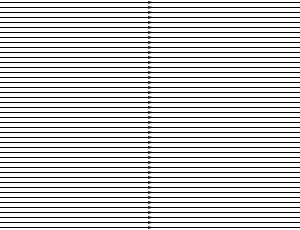

| abbreviation |
meaning |
resolution (pixels) |
aspect ratio |
remarks |
|---|---|---|---|---|
| QVGA |
(Quarter VGA) | 320×240 | 4:3 |
early mobile phones, etc. |
| - |
512×384 |
4:3 | first Macintosh |
|
| VGA |
(Visual Graphic Array) | 640×480 320×240 |
4:3 4:3 |
standard of IBM PC |
| SVGA | (Super VGA) | 800×600 | 4:3 | |
| XGA | (eXtended Graphic Array) | 1024×768 | 4:3 | usual projectors |
| WXGA | (Widescreen XGA) | 1280×720 | 16:9 | |
| SXGA | (Super XGA) | 1280×1024 | 5:4 | |
| UXGA |
(Ultra XGA) | 1600×1200 | 4:3 | |
| FHD | (Full High Definition) | 1920×1080 | 16:9 | Full HDTV |
| WUXGA | (Widescreen UXGA) | 1920×1200 | 16:10 | |
| QHD | (Quad HD) | 2560×1440 | 16:9 | 720p HDTV x 4 |
| 4K UHD | (4K Ultra HD) | 3840×2160 | 16:9 | 4K TV |
| DCI 4K | (Digital Cinema Initiatives 4K) | 4096×2160 | 1.9:1 | 4K digital cinema |
| model |
resolution (pixel) |
aspect ratio |
remarks |
|---|---|---|---|
| up to iPhone3G |
480×320 | 3:2 | half of VGA |
| iPhone4 |
960×640 | 3:2 |
2x VGA |
| iPhone5 |
1136×640 | 1.775:1 | almost 16:9 |
| iPhone6 |
1334×750 | 1.779:1 | almost 16:9 |
| iPhone6 plus |
1920×1080 | 16:9 | Full HD |
| iPad, iPad2, iPad mini |
1024×768 | 4:3 | XVGA |
| iPad the third generation and later | 2048×1536 | 4:3 | 4x XVGA |
| abbreviation |
meaning |
number of scanlines |
scanlines/ frame rate |
resolution |
aspect ratio |
remarks |
|---|---|---|---|---|---|---|
| NTSC | (National Television System Committee) | 525 |
480/60i | 640×480 | 4:3 |
North America, Middle America, Japan, Taiwan, South Korea, etc. |
| PAL |
(Phase-Alternating Line) | 625 |
576/50i | 768×576 | 4:3 |
Europe, etc. |
| SECAM | (Séquentiel Couleur Avec Mémoire) | 625 |
576/50i | 768×576 | 4:3 | France, Russia, etc. |
| HDTV | (High Definition Television) | 1125 1125 750 |
1080i 1080i 720p |
1920×1080 1440×1080 1280×720 |
16:9 16:9 16:9 |
| abbreviation |
resolution |
aspect ratio |
video encoding |
medium |
|---|---|---|---|---|
| DVD-Video/DVD-VR (SDTV) | 720×480/60i | 4:3/16:9 |
MPEG-2 |
DVD |
| DVD-Video/DVD-VR (SDTV) | 720×576/50i | 4:3/16:9 |
MPEG-2 | DVD |
| HDV |
1440×1080i 1280×720p |
4:3/16:9 |
MPEG-2 | digital video camera (DV tape, etc.) |
| AVCHD |
various |
4:3/16:9 | H.264 (MPEG-4 AVC) |
digital video (memory, etc.) |
| BDMV/BDAV |
various |
4:3/16:9 | MPEG-2 H.264 (MPEG-4 AVC) |
BD |
 |
|
 |
| In progressive scan, all scanlines are displayed at once |
In interlaced scan, odd fields and even fields are displayed alternately |